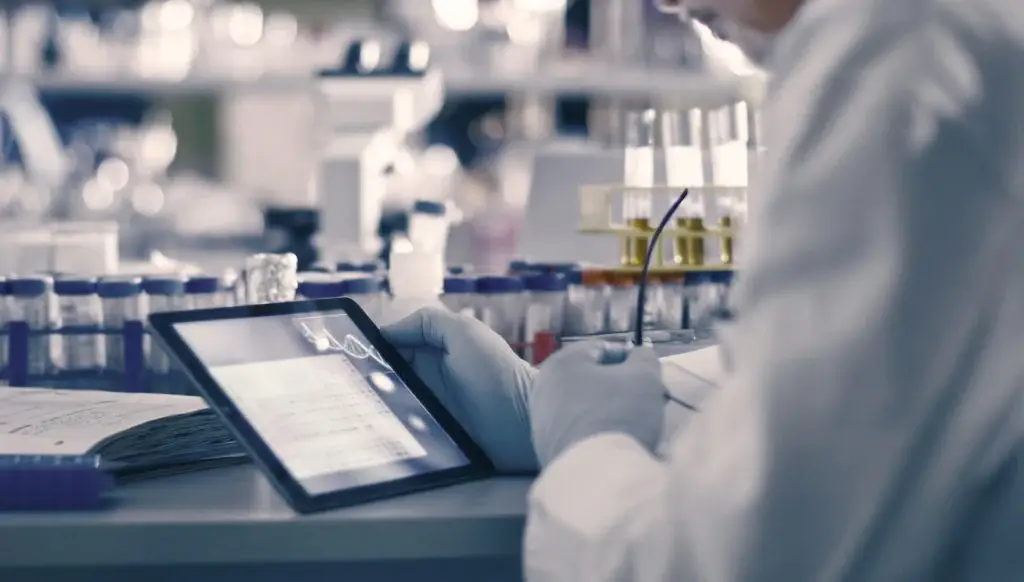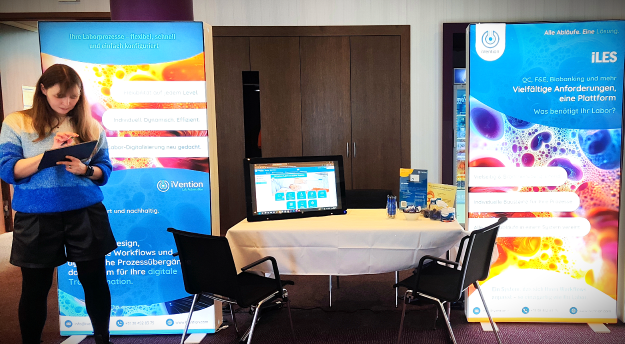
Minimized paper consumption, higher efficiency
A laboratory information and management system LIMS stores all the data generated in your laboratory on a daily basis and supports you in the execution of recurring workflows. A LIMS ensures regulatory compliance by automating data exchange and integrating instruments, providing transparent tracking of samples throughout the processing cycle, and ensuring appropriate quality management in regulated environments. In addition, a LIMS has the ability to perform evaluations or reports on all data available in the system, so that, for example, statistical evaluations of various tests or instruments or also certificates of analysis or test reports can be generated automatically. The LIMS also supports laboratories in modernizing workflows, as it minimizes the amount of paperwork in the laboratory and at the same time enables data to be stored in a digital environment. The main focus when introducing a LIMS is therefore greater efficiency, time and cost savings, and a reduction in the error rate.
However, the decision to implement a LIMS is rarely based solely on the aspect of rationalization, but also on the fulfillment of documentation obligations, early detection of errors, deviations and problems with the possibility of countermeasures and rapid availability of data or information.
Advantages of a LIMS at a glance
- Central management of all laboratory data (database)
- Electronic data acquisition where data is generated (Mobile LIMS)
- Standard laboratory procedures (workflows) out-of-the-box
- Traceability of all laboratory-related workflows and data
- Central management of documents (document management, CoA, etc.)
- High degree of automation (Lab 4.0)
- Reduction of the error rate (plausibility checks)
- Automated calculations and increase in accuracy
- Integration and data exchange with measuring devices or external systems
- Compliance (GxP, ISO17025, etc.)
- Increase efficiency
- Saving time and costs
What criteria should you pay attention to when planning the introduction of a LIMS?
The implementation of a LIMS is not a trivial matter. There are some essential points to consider to ensure a successful LIMS project implementation.
A LIMS project requires a very thorough and detailed planning or evaluation phase, during which you should document your requirements for the system in a URS (User Requirement Specification). It is also important to evaluate the market and thus gain an overview of the various LIMS vendors. This procedure guarantees the best possible mapping of laboratory processes in the system and safeguards your decision.
The architecture of the potential system is also an essential point that needs to be examined more closely. The focus should be on a technically forward-looking and durable system structure, in the course of which you have the possibility to carry out future updates or release changes in a lean process. This guarantees that data is retained over a long period of time and thus complies with the relevant guidelines for laboratories.
Furthermore, you should consider choosing the LIMS that can deliver the highest degree of standard functionality out-of-the-box for you and avoid overconfiguration or redundant customizing in the project. With a high degree of standard functionality, you safeguard your project to a high degree in terms of costs, resources, time required, updateability and risk.
Overview of essential LIMS criteria for successful project implementation
- Detailed planning/evaluation phase
- Documentation of the requirements in a URS (User Requirement Specification)
- Gain market overview
- Consider architecture (forward-looking, durable)
- Compliance (GxP, ISO17025, etc.)
- High level of standard functionality
- Avoidance of overconfiguration and redundant customizing


